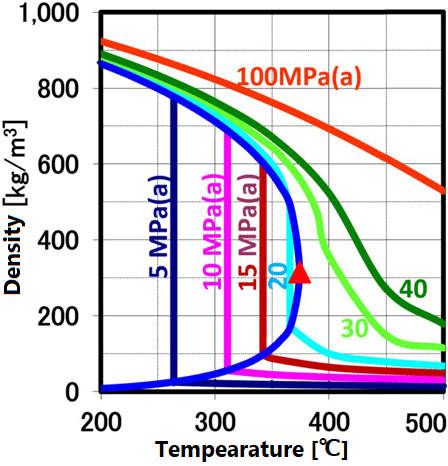Water is a substance that is abundant on the earth, but it has very unique physical characteristics compared to other materials. For example, a) It is suitable for a heat medium because it has a large specific heat. b) Since it is a non-linear molecule and has polarity, it has a large dielectric constant (relative permittivity 80) and dissolves electrolytes well. c) Due to its polarity, hydrogen bonds work between water molecules, so it is a liquid at room temperature for its small molecular weight. d) The water itself is partially dissociated. See also Q.0.
As the temperature of water is raised under pressure, the permittivity and ion product change significantly as shown in Q.0, and the properties are completely different from those of water at room temperature, making it possible to create new materials. In particular, the ability of supercritical water to be miscible with organic solvents such as oil has great advantages in chemical reactions and material synthesis. At room temperature, a special method has been required so far in order to react using liquids that do not mix with each other. In the supercritical state, it is possible to proceed the reaction by setting the temperature and pressure.

The advantages are summarized below.
| Easy solvent removal | Physical properties can be controlled | High reactivity at high temperatures | Characteristics of both gas and liquid |
| ・The dielectric constant can be adjusted by setting the temperature and pressure: water and organic compound can be mixed ・The ionic product of water is also variable: hydrolysis or radical reactions are possible |
Composite metal oxides can be synthesized. Particle synthesis and organic modification are possible at the same time: By modification, it can be dispersed in solvents or resins at high concentration and low viscosity. |
・Low molecular weight, low viscosity ・Low surface tension ・High diffusion/high permeability ・Density fluctuation/clustering |
